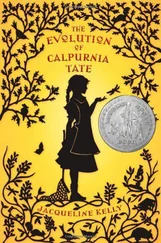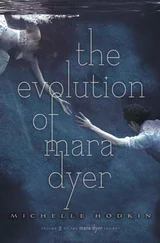She sat on the closed lid of the toilet, opened her purse, and rooted around among its contents. She found her pantyhose. She hiked her dress above her waist. I hurriedly sucked in the smell of her feet and bare legs and crotch. She slipped her slender bare feet into the translucent and weightless bags of the black nylon pantyhose, and tugged on them until they melded to the contours of her feet. Then she pulled the hosiery up until it conformed to the contours of her legs and enveloped her thighs and waist, and the hose became a thin protective membrane clinging to her skin. There may still be nothing, nothing I love to watch more than a beautiful woman rolling on or peeling off a pair of nylon pantyhose. Then she shimmied her dress back into position — good-bye, Lydia’s vagina! — and she took her shoes out of her purse. Lydia almost never wore shoes that were anything other than principally utilitarian. She hated high-heeled shoes, hated, hated, hated them. She nearly always put comfort before aesthetics, in all things — thus she was unused to walking in heels, and thereby particularly vulnerable to their blistering pinches and bites.
Lydia checked her appearance one last time in the mirror. Her hair was still short, but had grown out some, it just covered the tops of her ears. She went through the motion of sliding a wisp of hair behind her ear, but her hair was not yet long enough to stay put, and it immediately sprang out again. She was not wearing her glasses. She turned to me, watching her look at herself in the mirror. Our eyes made contact in the mirror.
“We’re going to be on our best behavior tonight, aren’t we, Bruno?”
I nodded yes.
Lydia sucked in a deep breath and let it out slowly, steadying herself with the extra oxygen, conscientiously trying to make her breathing natural and normal. Then she bent down slowly to the floor. She kneeled, folding her long powerful legs — made even longer by the high-heeled shoes she so violently loathed — until her face was level with mine, and she looked directly into my eyes. She wrapped her hands around the back of my head, and I wrapped my gangly arms around her back, and we exchanged a long and passionate kiss. Our lips mingled, our tongues wound together, we breathed each other’s hot breath and drank each other’s spit. It is painful — almost physically painful to me, it sickens me, it gives me a heartache as real and visceral as a bellyache — to remember how in love we were.
Lydia took my hand, squeezing it in hers.
“Okay,” she whispered in my ear. “Let’s go.”
She rose to full standing position, and, leading me by the hand, unlocked the door and pushed it open.

The gallery opening. I’m sure you know what these things tend to look like. There were a couple of inexpensive tables covered with expensive tablecloths: on one of them stood many wineglasses and bottles of wine, ice buckets for the white wine, which the caterers poured for the guests, and on the other table was an arrangement of hors d’oeuvres: brownies, cheeses, crackers, little tomatoes, miniature salami sandwiches and such. Most of the event’s attendees were dressed nicely. Hands were shaken, limp embraces exchanged, spouses introduced, wineglasses dinged like bells, fancy shoes clopped on the waxen concrete floor and a liquid hum of general conversation sloshed around inside the echo-conducive white room, in which waves of polite laughter crested and broke here and there. Have you ever noticed how similar the ambiance of an art gallery is to that of a laboratory?
Fifteen of my larger paintings hung on the white walls of the gallery space. I chose, following Lydia’s suggestion, not to display the exploratory forays into the abstract that I was already beginning to paint, but to stick with the more meticulously rendered representational pieces in order, at this early stage in my career, to showcase my mastery of technique rather than my innovative approach to concept. Four of them were self-portraits modeled after my reflection in Lydia’s bathroom mirror, at such an angle and using such a palette as to deliberately evoke Van Gogh — in one of them I even depicted myself wearing a wide-brimmed straw hat, in obvious homage to my favorite mad Dutchman, though only a handful of those philistines got the joke. One was a portrait of Norman Plumlee, fleshed out of a charcoal sketch of him that I dashed off once when visiting the lab with Lydia (I have since destroyed that painting). Two were paintings of Lydia. (The many nudes that I had painted of her were not on display for obvious reasons. Many of those were later destroyed as well. The one that hangs above the couch on which I am at this moment reclining is the only extant one that I know of.) Another one was a landscape — technically impressive but conceptually bankrupted by my then immaturity as an artist — looking southward on the Chicago lakefront in the summer; it is maybe a little reminiscent of Seurat’s Sunday Afternoon on the Grande Jatte , with all the pretty girls slothing an afternoon away on the beach, dogs teething on frisbees, the Hancock Center with its latticework and horns in the background, and the big blue expanse of Lake Michigan, peppered with sailboats, which dominates the left half of the painting.
I imagine that the people in attendance at the gallery opening would have had an experience something like this: As soon as there are enough people present, as soon as there are enough mouths in the room to produce enough conversation to swirl around in the airspace between enough warm bodies to subdue the echo effect in the starkly empty space — which is painted white all around and unfurnished except for my paintings on the walls, the two foldout tables that hold the hors d’oeuvres and the wineglasses and the wine, and a couple of black leather Mies van der Rohe couches in the center of the room, facing my paintings — as soon as the ambiance of the room is just right, the social atmosphere comfortable enough, there enters through the open front doors of the gallery a beautiful and beautifully dressed young woman in a black dress and short blond hair, and there — holding her hand, walking beside her, proudly, on two legs, like a man, wearing shoes even, dressed in a little gray suit with a lime-green tie and his hair perfect — is the artist.
Yes, he happens to be a chimp. A chimp dressed in the trappings of human civilization is ordinarily funny to you. That is why we see chimps dressed up in idiotic costumes on TV commercials. It’s the stuff of the circus, of vaudeville, of the burlesque, the freak show. Obviously, the reason why you think it is so fucking funny to see a chimp dressed in human clothes and taught to ludicrously mimic human behavior is because you think of yourselves as having the only proper culture. You define yourselves as the only cultured species, and this has allowed you to believe that your culture has helped you break away from the rest of nature. You think that your precious culture is what makes you human. Therefore, the sight of an ape — so close to you, and yet seemingly so far — dressed up in human clothes and behaving like a human being is utterly incongruous — hence, funny. But what if— what if you see an ape who wears a suit and a tie and walks on two legs, an ape who has made this step into human culture not simply to appease his trainers, who mock and pimp and debase him to provide cheap titillation to the drooling hoi polloi— but of his own free will ? Suddenly it’s not so funny anymore. Is it?
That is why this particular chimp is not funny. He is not cute. He does not look like a circus chimp, riding around in circles honk-honk on his little scooter, who has been dressed in the borrowed robes of human civilization for everyone’s sophomoric amusement. He is dressed this way because he wants to be. He is a chimp, yes, his hairy arms and fingers are long and spindly, his lips and chin protrude from his rubbery, hairy, masklike face — but in all other respects, he looks like a man — you can see the light of human culture glowing in his eyes like magic stones. And the effect is all the more unsettling because of it. No one would think him funny or cute. The image is far too disturbing. Here, ladies and gentlemen, is the artist.
Читать дальше













